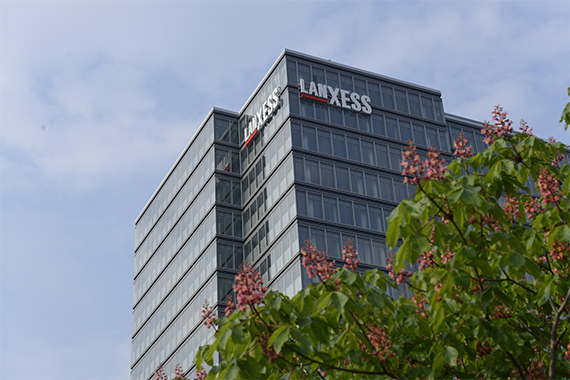More news
- Asian paint regulatory round up – Indonesian exterior paint still uses lead, warns W...
- Nigeria’s paint industry navigates regulatory changes and economic challenges amid p...
- Focus on the global coatings market: Global coatings market outlook
- Ask Joe Powder – October 2024
- Chinese paint majors look to domestic consumer sales as commercial real estate slumps

- Adiprene LF prepolymers as powerful building blocks for adhesives and sealants
- Easy to use, higher functionality for improved performance and processing
- Expert presentation on low monomer prepolymer technology for hot melt adhesives
- New generation of low monomer MDI prepolymers
- Also with bio-based content of up to almost 30% available
From April 25 to 27, 2022, speciality chemicals company LANXESS will be showcasing its extensive product range for the design of reactive holt melt systems and share new insights in the innovative low free (LF) monomer technology at the World Adhesive & Sealant Conference in Chicago, Illinois, USA. Existing and new customers can find out what solutions LANXESS’s low-monomer technology offers to develop adhesive and sealant products for specific requirements. The company will also provide new insights into its innovative Low Free (LF) monomer technology. The World Adhesive & Sealant Conference is established as the leading international event for stakeholders in the adhesive and sealant industry worldwide. It takes place only once every four years alternating between the United States, Europe and Asia.
The "Further Advancements in Low Free Isocyanate Monomer Prepolymer Design for Reactive Adhesive Systems” will be presented by Ronald Emanuel Jr., Head of Global Research and Development, Adhesives at LANXESS Urethane Systems business unit, on April 26 at 1:40 pm. Here, the latest research results in the field of low free isocyanate monomer prepolymers for reactive adhesive systems will be revealed.
Benefits for the environment, health and occupational safety
LANXESS has developed unique prepolymers with less than 0.1 wt.% free MDI (methylene diphenyl diisocyanate) and other isocyanates that are used for hot melt adhesives among others in the automotive, construction, electronics and bookbinding industries. This low monomer technology offers outstanding technical performance, exceptional processability and productivity, as well as environmental, health and safety benefits. These prepolymers are particularly suited to address increasingly strict regulatory requirements and provide for final products with lower hazard classifications.
The removal of diisocyanate monomer can present challenges in the final adhesive formulation such as different reactivity, the amount of prepolymer needed and overall different adhesive properties.
However, LANXESS’s toolbox of low monomer prepolymers can overcome these challenges and is able to tailor the reactivity, viscosity and polyol backbone of the prepolymer to adjust it to the need of the formulators. By controlling the chemical structure, these prepolymers have a highly structured morphology to offer more consistent processing.
Adiprene Green LF – bio-based prepolymers with excellent properties
Like many other industries the adhesives industry is facing the challenge to develop sustainable systems that also carry low health and safety risks. Under the brand name Adiprene Green LF LANXESS provides a line of high performance, bio-based, low free diisocyanate monomer products for polyurethane adhesive applications. Bio-based LF MDI prepolymers focus on chemical building blocks that are clearly defined to match the most challenging adhesive properties. By exploring additional chemistries and optimisation of molecular weight and structure, bio-based LF prepolymers can be tailored to the specific needs of many different applications. Progress has been made developing bio-based LF MDI prepolymers over a wide range of NCO content (free reactive isocyanate groups) which yield systems with lower viscosity at application temperature, improved high crystallinity, better wetting ability, and fast green strength in reactive hot melt and two-component adhesives formulations. The bio-content of these LF MDI prepolymers can reach up to almost 30% which enables hot-melt formulations with a bio-content of up to 75%.
LANXESS’s bio-based prepolymers enable companies to reduce emissions while helping to advance climate neutral goals. This novel bio-based technologies provide excellent performance, processing, and productivity and allow for a 20% to 30% CO2 footprint reduction when compared to petroleum-based prepolymers.
You can find more detailed information about LANXESS polyurethane products at https://ure.lanxess.com.



